The Amazing Pokaran Fort near Jaisalmer, Rajasthan || A beautiful structure that effortlessly blends with the desert landscape it is built in
After Khichan Bird Sanctuary, we had decided to stop at Pokaran Fort. It was about 68 kilometers from the bird sanctuary and we would reach it within an hour. Most of us in our generation only found out about Pokaran after India conducted their second successful nuclear test in this region.
Even then we did not know that Pokaran has one of the most charming little forts that we would come across in this trip. We did have some difficulty finding it though, because the fort is tagged incorrectly on Google Maps. So when you reach Pokaran town, you may need to ask people about the exact location of the fort.
Unlike most forts, this fort is not visible from a distance because it is not located on a high hill. And you would need to drive through the town and the market to get there. There is paid parking just outside the fort so do not listen to neembu paani wallah's who ask you to park your vehicles close to their thelas. The designated parking is a much safer place to park.
Anyhow once you reach the fort, you feel a sense of isolation from all the cacophony of the town outside. And you are immediately aware of the beauty of this little fort. When we were there, there was some footfall but not as much as you find in other more famous forts.
The entrance to the fort is Rs 50 for Indian Tourists and Rs 200 for Foreign Tourists. Also the place is mostly free of commercialization and, therefore, there's a feeling of calm and peace and you sense that you will be able to explore this place at your own pace.
Pokharan fort is a 14th century building, which was commissioned by Rao Maldeo, the chief of Champawats, one of the clans of Rathores of Marwar-Jodhpur Rajputs. The fort is currently owned by the Pokaran family, specifically Thakur Nagendra Singh Pokaran and his wife Thakurani Yashwant Kumari Pokaran who have opened it to general public by turning a part of it into a heritage hotel.
The Pokaran fort is also known as Balagarh. The word Pokaran word means “The Place of Five Mirages” and the city of Pokaran was once a trade route to Persia through which silk, spices, and salt were traded. The fort is also known to have offered hospitality to the Mughal emperor Humayun in the 16th century.
The fort also has a temple dedicated to Goddess Durga. You sense the temple before you see it. There are rows and rows of bangles and chunris tied to the ropes leading up to the temple. And you can also find some photographs (mostly those of young men and boys) that may have been left behind by mothers and wives to protect these individuals from any danger.
It is touching to see these. I do hope that this is the reason for the photographs to be left behind and not something more morbid. You also find similar photographs left behind glass walls in the museum inside the fort.
We were puzzled by why people were offering coins and photographs to some relics of yesteryears' kings. It isn't strange here in Rajasthan where some rulers have been elevated to the rank of God and the legends of their brave exploits have been passed on from generation to generation.
However, with some research after the visit, I found out that these offerings are actually related to the legend according to which Guru Ramdev ji actually visited the fort and stayed here. And it is not unlikely. Legendary Guru Ramdev ji was born in a village called Ramdevra not too far from Pokaran in the year 1409. And he is a highly revered local God in these parts.
While we were roaming around in the premises, we came across a group of elderly gentlemen from Gujarat who had come on a tour here. They were all dressed in traditional attire of white dhoti kurtas and matching turbans and many of them were carrying laths (staff).
We talked to them for a while and clicked pictures with them. They gave us their children's phone numbers so that we could forward the photos to them. Some of them were carrying mobile phones, but none of them had a smartphones. So the transfer of photos could not happen there and then.
The floor itself has several interconnected palaces just like most forts and some of these palaces are 3-4 floors high and it is always fun to explore these passages and imagine how people in earlier times would have led their lives.
Built mostly out of yellow sandstone, the fort is stunning in its use of natural material to withstand the harsh desert climate. The architecture is mostly Rajputana and therefore you will find intricate carvings and jaalis and jharokhas that are unique to this style.
The doors are made of wood and the main gate has spikes like most other forts so that the elephants in enemy's army could not break through. The beauty of these buildings is that they merge so beautifully with the desert around. They are like jewels that enhance the landscape rather than dominate it.
We were here for a couple of hours and it turned out to be a really good stop. It was relaxing and well worth the time spent. Apart from the fort, while you are at Pokaran you can also visit the Chhatris that were built to commemorate queens who committed Sati.
Everywhere we went, we found this somber reminder of how little women's lives were valued. The only thing that cheered us up was the knowledge that some of these cruel practices disappeared from our society centuries ago. Anyhow, after Pokaran, our next stop was going to be Akal Wood Fossil Park and I was really excited about it. We will share about this unusual place soon.
Related Blogposts -

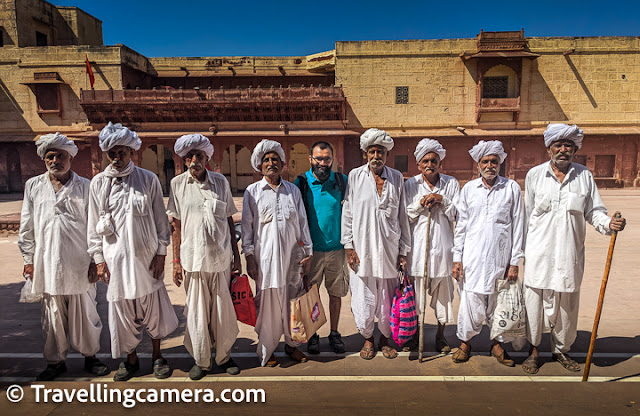






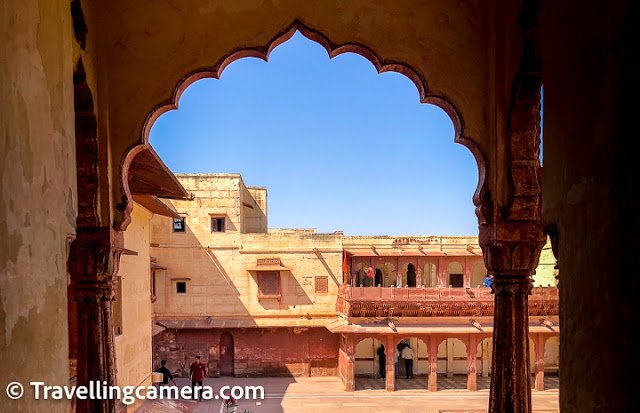

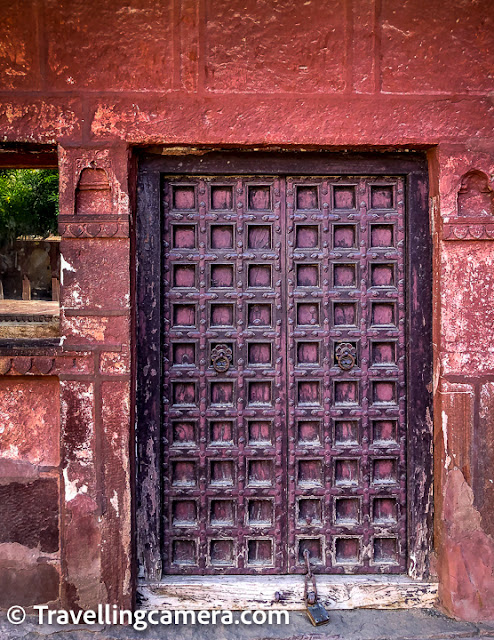




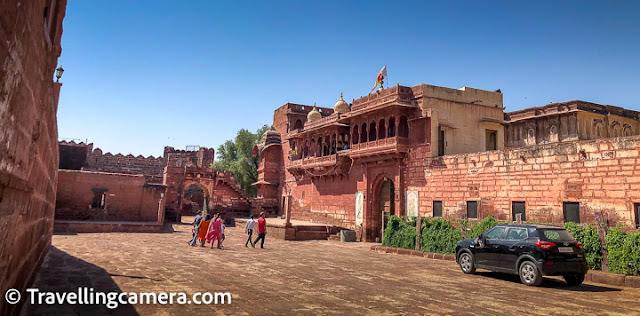





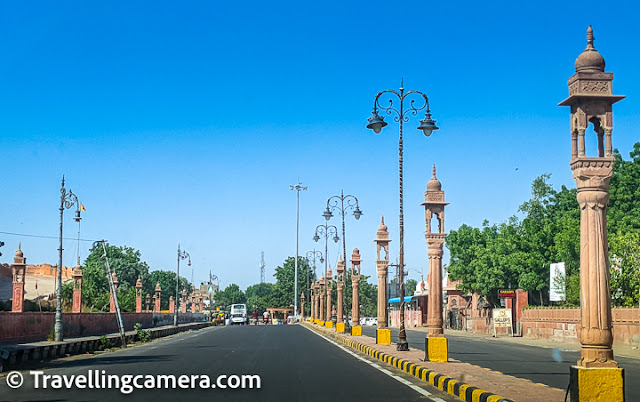




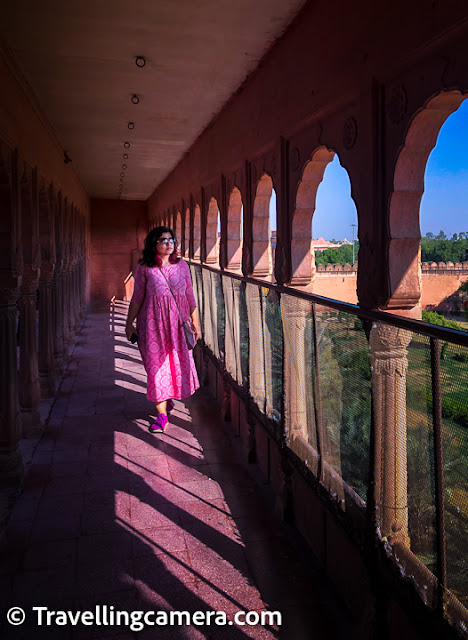

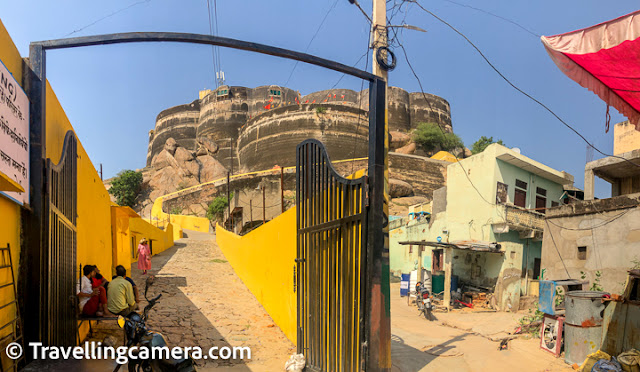

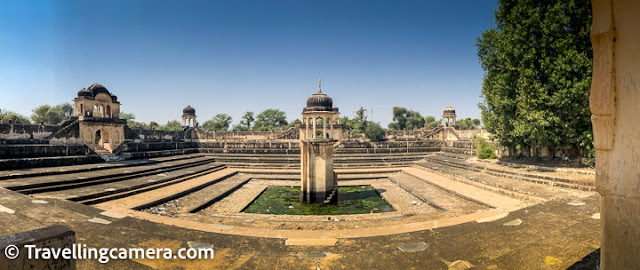



.jpg)
Comments